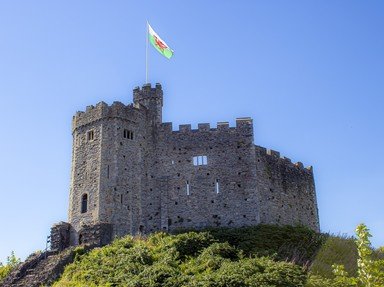Quiz Answer Key and Fun Facts
1. The year is 1349, and the location is London, England. The scene is extremely troubling: a sea of rats covers the narrow street, while filthy street urchins lie dying in a heap, with large, tumour-like swellings covering their skin. Nearby a group of men dig a mass grave. What historical pandemic caused this?
2. The year is now 1922 and we are in Egypt's Valley of the Kings. A staircase leads down to a long passageway, where three individuals, (two males and one female), are gazing at something. The younger of the men has made an opening in the upper left-hand corner of what looks to be a sealed doorway, and is using a candle to catch a glimpse of whatever lies on the other side. Unable to contain his excitement any longer, the oldest man blurts out, "Can you see anything?", prompting his younger companion to exclaim, "Yes, wonderful things". Which great archaeological moment is described here?
3. The year is 1872, and our location is somewhere in the middle of the Atlantic Ocean, on a Canadian ship called the Dei Gratia. It is around one in the afternoon, and the weather is uneventful, yet there is a drifting ship nearby, its sails slightly torn, and its helm unmanned. It is an eerie sight, and as the Dei Gratia's chief mate hops on board, it becomes even clearer that its passengers and crew are all gone. What is the name of this ship, whose passengers and crew seemed to vanish without a trace?
4. The year is 1912, and our location is the North Atlantic, on board another historical ship. It is approximately 11: 39pm, and an iceberg is about to collide with the side of the ship, leading to the eventual loss of approximately 1,500 lives. Is this ship the RMS Titanic, which, prior to its maiden voyage, was billed as the amazing, 'unsinkable' ship?
5. The year is now 1536 and we are back in London again, as the somewhat familiar outline of the Tower of London comes into view. Some scaffolding has been erected, and a forlorn-looking woman stands on top of it. Dignified in her black damask robe and white mantle, she allows herself to be blindfolded, as her executioner takes aim with his sword. She is the first English queen to be executed, but will not, unfortunately, be the last. Who is this unfortunate woman?
6. The year is 1215 and the location is Runnymede, in the Kingdom of England. Cries of "John Softsword" and "Lackland" ring out, and there appears to be a signing or sealing of some sort in progress, though the man doing it looks exceptionally unhappy about it. Which landmark historic event is this?
7. The year is now 1913, and the location is a racecourse in the town of Epsom, England. A race is in progress and everything appears normal, at least until the horses approach the final bend. Out of nowhere, a 40 year old woman wanders onto the course, seeming to be on the lookout for one particular steed. Suddenly, she propels herself towards one of the horses, and a sickening collision occurs, throwing the jockey and causing the horse to tumble to the ground. As people start to run towards the scene of the crash, the woman responsible for it lies injured, and soon motionless, on the grass. To which radical, historical movement does this injured woman belong?
8. The year is 1840 and the location in South Wales. It is night-time, and the lush countryside seems to stretch for miles. A toll gate is faintly outlined by the light of the moon, and suddenly a group of people approach, armed with axes, completely confident in their disguise. For these are not your average farm workers, but rather a mob dressed in female garb. They fall to their task immediately, attacking and destroying the wooden gateway they hate so much, before turning on their heels and disappearing into the night. According to the history books, who are these individuals?
9. The year in now 1831, and our location is Cardiff, South Wales. The mood is sombre, and thousands of people, some of whom are sobbing, line the streets. Nearby a coffin is being prepared for transport and is it clear that some poor soul has been executed, much to the chagrin of the local population. Incredibly, as the coffin sets off on its journey away from Cardiff, scores of individuals begin to follow it, determined it seems, to see it all the way home. Who is the man who rests in this coffin, having been executed for his alleged role in the Merthyr Rising of June 3rd?
10. The year is now 1994 and we are in Calais, France. There is plenty going on, and the jaunty tune of the French national anthem can clearly be heard. Her Majesty the Queen stands alongside the French President, and the Prime Ministers of France and the United Kingdom stand a little way behind. Red and blue ribbons are cut by both heads of state, and there are plenty of photographs being taken by the world's press. In the distance, two locomotives stand, nose to nose, a symbol of unity, for something truly ground-breaking is taking place. What special event is being celebrated here?
Source: Author
poshprice
This quiz was reviewed by FunTrivia editor
bloomsby before going online.
Any errors found in FunTrivia content are routinely corrected through our feedback system.

